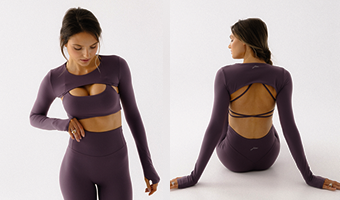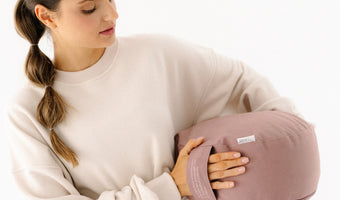Pilates – what is it and what are its effects?
Pilates is currently one of the most popular forms of exercise, thanks to its many and varied benefits for the entire body. Can regular training benefit the spine? Which muscles are strengthened during specific poses? Read the article below and learn what Pilates is and what benefits it offers to those who practice it!
What is Pilates and how did it come about?
Pilates is a set of exercises that dates back to the 1920s. It was developed by German athlete Joseph Pilates , who combined elements of yoga, ballet, and isometric gymnastics . Having struggled with various health ailments for many years, including rickets and asthma, he decided to create a system that would not only strengthen but also stretch muscles.
This resulted in a training system encompassing 34 types of exercises. Based on his experience as a medic during World War I, Pilates enriched his concept with special rehabilitation machines to help soldiers regain mobility.
What are the types and levels of Pilates?
Pilates difficulty levels are tailored to the participants' level of advancement, as well as their strength and overall fitness. There are two main forms of exercise: on a yoga mat (using only one's own body weight) and with the help of advanced machines (e.g., a reformer) .
Over time, many of these exercises have undergone some modifications, primarily due to the introduction of new accessories. Over the nearly century-long history of Pilates, several variations have emerged. One of these is Power Pilates, which, like Power Yoga, is characterized by a higher intensity , requiring at least an intermediate level to perform this set of exercises.

What are the health and aesthetic benefits of Pilates?
Wondering what Pilates can do for you? The benefits of practicing this type of exercise span multiple levels. Here are the key benefits:
- strengthening of deep muscles, including the pelvic floor muscles;
- increased body fitness and flexibility;
- improving mobility and motor coordination;
- minimizing back and spine pain;
- improved blood circulation;
- stress reduction.
Regular Pilates not only benefits your health but also shapes your figure . Improved posture, thanks to regular practice, should be noticeable after just a few months.
How to start practicing Pilates and what do you need?
No matter where your Pilates training takes place, you'll need a few universal essentials to complete your workout. A basic element is comfortable, form-fitting clothing that provides full support. Pilates clothing shouldn't restrict movement, so a pair of yoga leggings with a tank top is recommended.
An exercise mat is also a must-have for every workout – no activity, whether Pilates, gymnastics, or fitness, is complete without one . Above all, make sure it's of adequate thickness, ensuring stability and cushioning.
If you want to diversify your exercises, you can purchase simple yoga accessories , such as a ball or a sensorimotor pillow . Also, remember to consider your safety. If you have any health issues, such as a serious injury, it's a good idea to consult a doctor before participating in the exercises.
Where and with whom do you practice Pilates?
Many people considering physical activity choose to train Pilates under the supervision of experienced instructors. Finding a beginner class, especially for people of all ages, is now easy , allowing everyone to tailor their level of advancement to their individual needs and physical condition.
You can also train on your own. Thanks to advanced instructional materials prepared by experts , practicing Pilates at home is gaining popularity . The results are no different than those achieved in a professional gym. However, it's important to perform each exercise carefully.
Taking part in professional classes has one major advantage: the opportunity to use Pilates machines, such as reformers, under the supervision of a specialist.


